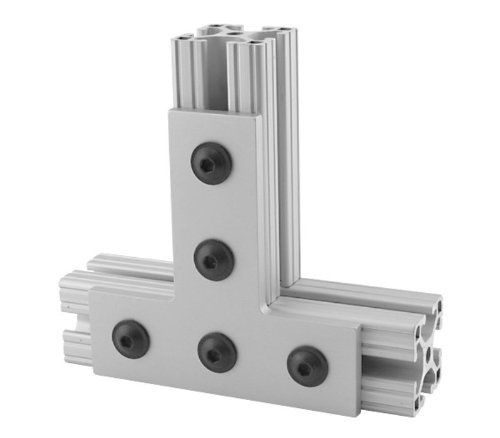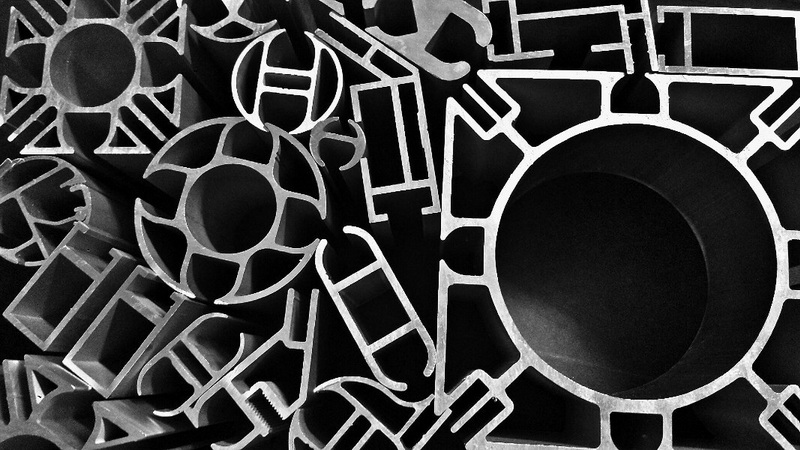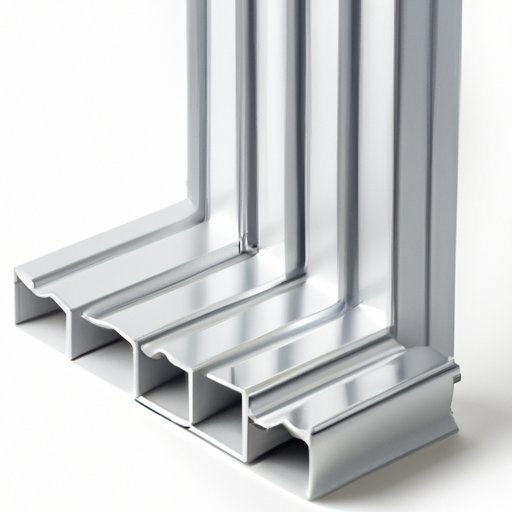Content Menu
● Understanding Aluminum Extrusion
>> Key Features of Aluminum Extrusion Profiles
● Profile Specifications
>> 2020 Aluminum Extrusion
>> 4040 Aluminum Extrusion
>> 8020 Aluminum Extrusion
● Comparative Analysis
● Strengths and Weaknesses
>> Strengths of Each Profile
>> Weaknesses of Each Profile
● Applications in Various Industries
● Advances in Design and Structural Integrity
>> Increased Load Capacity
>> Enhanced Rigidity
>> Versatile Accessory Compatibility
● Sustainability and Environmental Aspects
● Machinability and Customizability
● Assembly and Integration
● Conclusion
● Related Questions
>> 1. What are the primary uses of the 2020 aluminum extrusion?
>> 2. How does the load capacity of the 4040 compare to that of the 2020?
>> 3. What makes the 8020 aluminum extrusion suitable for heavy-duty applications?
>> 4. Can these aluminum extrusions be customized?
>> 5. Is there a significant cost difference between these profiles?
Aluminum extrusion has revolutionized the manufacturing and construction industries by providing lightweight, strong, and versatile materials for various applications. Among the most popular profiles are the 2020, 4040, and 8020 aluminum extrusions. Each profile has unique characteristics, advantages, and applications that make them suitable for different projects. This article will delve into a comprehensive comparison of these three profiles, focusing on their specifications, strengths, weaknesses, and ideal use cases.

Understanding Aluminum Extrusion
Aluminum extrusion is a process that involves shaping aluminum alloy into desired profiles by forcing it through a die. The resulting extrusions can be used in a wide range of applications due to their excellent strength-to-weight ratio, corrosion resistance, and ease of machining.
Key Features of Aluminum Extrusion Profiles
- Lightweight: Aluminum is significantly lighter than steel, making it easier to handle and transport.
- Corrosion Resistance: Aluminum naturally forms a protective oxide layer that resists corrosion in various environments.
- Versatility: Extruded aluminum can be easily cut, drilled, and shaped to meet specific project requirements.
Profile Specifications
2020 Aluminum Extrusion
- Dimensions: 20mm x 20mm
- Weight: Approximately 0.5 kg/m
- Typical Alloy: 6063-T5
- Applications: Robotics, small frames, DIY projects, and lightweight structures.
The 2020 aluminum extrusion is known for its compact size and lightweight nature. It is particularly favored in applications where space is limited and precision is paramount.
4040 Aluminum Extrusion
- Dimensions: 40mm x 40mm
- Weight: Approximately 1.1 kg/m
- Typical Alloy: 6063-T5
- Applications: Medium-duty frames, industrial equipment supports, and larger structures.
The 4040 profile offers greater load-bearing capacity due to its larger cross-section. This makes it suitable for applications requiring more structural integrity without significantly increasing weight.
8020 Aluminum Extrusion
- Dimensions: 80mm x 80mm
- Weight: Approximately 2.2 kg/m
- Typical Alloy: 6061-T6 or similar high-strength alloys.
- Applications: Heavy-duty machinery frames, large automation systems, and complex structural designs.
The robust design of the 8020 profile provides exceptional strength and rigidity, making it ideal for demanding applications where heavy loads are common.

Comparative Analysis
| Feature | 2020 Aluminum Extrusion | 4040 Aluminum Extrusion | 8020 Aluminum Extrusion |
| Dimensions | 20mm x 20mm | 40mm x 40mm | 80mm x 80mm |
| Weight | Light (approx. 0.5 kg/m) | Medium (approx. 1.1 kg/m) | Heavy (approx. 2.2 kg/m) |
| Load-Bearing Capacity | Moderate | High | Very High |
| Rigidity | Good | Better | Best |
| Typical Applications | Small structures | Medium-duty applications | Heavy-duty machinery |
| Cost | Lower | Moderate | Higher |
Strengths and Weaknesses
Strengths of Each Profile
- 2020 Aluminum Extrusion
- Excellent for small-scale projects.
- Cost-effective option for budget-sensitive designs.
- Easy to assemble with standard connectors.
- 4040 Aluminum Extrusion
- Balances strength and weight effectively.
- Versatile for medium-load applications.
- Provides better stability compared to the 2020 profile.
- 8020 Aluminum Extrusion
- Superior strength and rigidity.
- Ideal for complex structures requiring high durability.
- Extensive accessory options available for modular designs.
Weaknesses of Each Profile
- 2020 Aluminum Extrusion
- Limited load-bearing capacity compared to larger profiles.
- Not suitable for heavy-duty applications.
- 4040 Aluminum Extrusion
- Slightly heavier than the 2020 profile.
- May be overkill for lightweight projects.
- 8020 Aluminum Extrusion
- Higher cost may not be justified for small-scale projects.
- Heavier weight can be a disadvantage in some applications.
Applications in Various Industries
The choice between the three profiles often depends on the specific requirements of the project at hand:
- Electronics and Robotics: The compact nature of the *2020 profile* makes it ideal for building frames for electronic devices or robotics where space is constrained.
- Industrial Applications: The versatility of the *4040 profile* allows it to support machinery or assembly lines that require moderate load capacities without excessive bulk.
- Heavy Machinery and Automation: The robust construction of the *8020 profile* is perfect for creating frameworks that need to support significant weight or withstand harsh conditions.
Advances in Design and Structural Integrity
Aluminum extrusion profiles have seen significant advancements in design capabilities over recent years:
Increased Load Capacity
Larger cross-section sizes and thicker walls significantly enhance load-bearing capacity across profiles. This means that as you move from *2020 to 4040 to 8020*, you can expect a marked improvement in how much weight each can support without compromising structural integrity.
Enhanced Rigidity
Wider and thicker structures effectively resist bending and twisting forces. This increased rigidity ensures that constructions remain stable under various conditions, which is especially crucial in industrial settings where precision is vital.
Versatile Accessory Compatibility
All three profiles feature a rich accessory system designed to meet complex structural connection needs. This includes T-nuts, corner brackets, slides, and other connectors that facilitate easy assembly while enhancing stability.
Sustainability and Environmental Aspects
Aluminum extrusions are highly sustainable materials due to their recyclability. The recycling process is relatively simple with minimal environmental impact compared to other materials like plastics or steel. By selecting the right profile size and type based on project needs, manufacturers can reduce material waste significantly while improving resource utilization.
Machinability and Customizability
All three profiles exhibit excellent machinability:
- The *2020 aluminum extrusion* is often used in projects that require precise cuts and fittings due to its smaller size.
- The *4040 aluminum extrusion* allows for moderate customization while still maintaining structural integrity during machining processes.
- The *8020 aluminum extrusion*, being larger, is more suitable for extensive machining operations where heavy-duty components are required.
Assembly and Integration
All profiles feature standardized connection systems that allow for quick assembly and integration into existing structures or new designs. Larger profiles may require stronger connectors and tools for assembly but offer greater flexibility in terms of design complexity.
Conclusion
In conclusion, each aluminum extrusion profile—*2020*, *4040*, and *8020*—offers unique benefits tailored to different applications. The choice between them should be guided by factors such as load requirements, project scale, budget constraints, and design flexibility. For lightweight projects requiring precision, the *2020 aluminum extrusion* is an excellent choice; for medium-load needs with enhanced stability, consider *4040 aluminum extrusion*; while *8020 aluminum extrusion* stands out as the best option for heavy-duty applications demanding superior strength and durability.

Related Questions
1. What are the primary uses of the 2020 aluminum extrusion?
The primary uses include robotics, DIY projects, small frames, and lightweight structures due to its compact size and ease of assembly.
2. How does the load capacity of the 4040 compare to that of the 2020?
The load capacity of the *4040 aluminum extrusion* is significantly higher than that of the *2020*, making it suitable for medium-duty applications requiring more structural integrity.
3. What makes the 8020 aluminum extrusion suitable for heavy-duty applications?
Its larger dimensions provide exceptional strength and rigidity, allowing it to support heavy loads in demanding environments without compromising structural integrity.
4. Can these aluminum extrusions be customized?
Yes, all three profiles can be easily cut, drilled, and modified to meet specific design requirements due to their versatile nature.
5. Is there a significant cost difference between these profiles?
Yes, generally speaking, *2020 aluminum extrusions* are more cost-effective compared to *4040* and *8020*, which tend to be more expensive due to their increased size and strength capabilities.






















